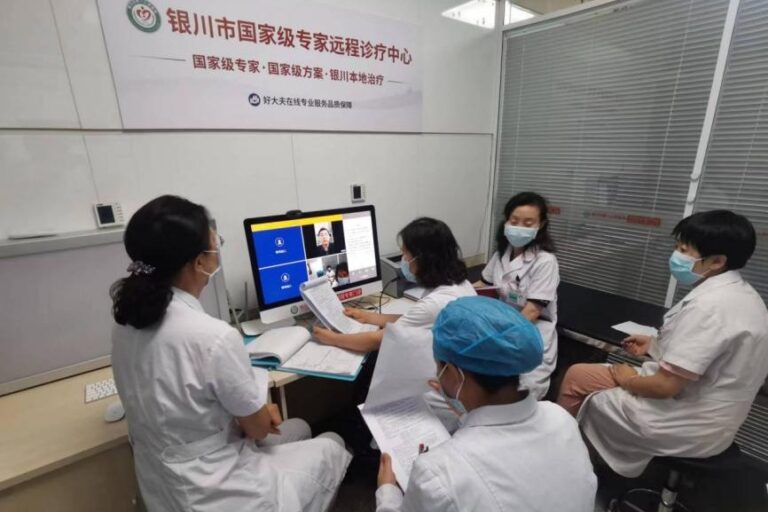YINCHUAN — A 15-day-old baby in Yinchuan, the capital of northwestern China’s Ningxia Hui Autonomous Region, had a rash all over her body that kept coming back despite targeted treatment.
This caused great anxiety for the baby’s family, who at one point considered transferring the baby to the Chinese capital, Beijing, for further treatment.
However, arranging an ambulance for the long journey of a newborn can be quite expensive. It was also very difficult to get an appointment with a specialist in Beijing.
At the recommendation of doctors, the family sought help from the city’s national expert remote diagnosis and treatment center at Yinchuan First People’s Hospital. They contacted Zhang Bin, a doctor in the pediatric dermatology department at Beijing Children’s Hospital. After a joint examination, it was determined that the child’s symptoms were not a rash, but a rare disease called achromatopsia.
The experts provided a detailed medication plan, which was implemented by a doctor in Yinchuan. Thanks to timely telemedicine services, the child’s symptoms improved significantly.
This is just one of more than 3,000 cases treated by the center with the help of renowned experts from top hospitals in major cities. Telemedicine services allow patients to receive rapid diagnosis from experts without having to travel to Beijing or Shanghai, saving them non-medical costs and allowing them to take advantage of local medical insurance.
“In recent years, the number of medical professionals engaged in telemedicine services has doubled, enabling faster and more accurate telemedicine services,” said Zhang Wei, a staff member at Yinchuan National Expert Telediagnosis and Treatment Center. .
More than 900 experts from Beijing, Shanghai and other cities have so far provided telemedicine services to local patients, resulting in increased acceptance and awareness of the service, Zhang said.
In recent years, revolutionary changes have occurred due to the fusion of the Internet and the medical field. Currently, all cities and counties in China are covered by telemedicine services, which is especially important for remote areas and grassroots medical institutions in the west.
Ningxia Hui Autonomous Prefecture has introduced a series of policies to support online hospitals. A five-stage telemedicine system was established, and a remote electrophysiology, image diagnosis, ultrasound diagnosis, and pathological diagnosis center was built.
At Yinchuan City’s remote imaging diagnostic center, screens display real-time updates of diagnostic data uploaded from multiple townships and community health centers.
Cao Ye, director of the radiology department at Yinchuan City First People’s Hospital, said the platform provides 24-hour remote diagnosis services to grassroots medical institutions, processing an average of 300 to 500 cases a day. .
“We don’t have any technicians here who can provide diagnostic imaging reports. But with the remote system, patients can get the results on their smartphones within 30 minutes,” said Yang, a radiology technician at the Go Health Center in Jinfeng District, Yinchuan City.・Jiang Qiang said. “This will enable them to enjoy diagnostic radiology services from top hospitals.”
Yinchuan First People’s Hospital conducts annual training for local radiologists and technicians to improve their skills in operating radiology equipment.
“Over the past few years, my skills have further improved. By getting help from doctors from top hospitals through telemedicine services, patients can now feel more comfortable visiting our hospital.” Yang he said.

